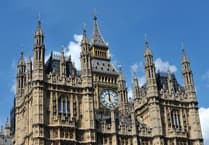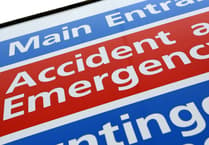Residents could face fines for driving into their own streets if they do not register their vehicles with Bath and North East Somerset Council.
Cameras with automatic number plate recognition monitoring entry will be one option on the table when co-design of liveable neighbourhoods gets underway.
Councillors have been assured that residents, tradespeople and emergency vehicles will be able to gain access when measures aimed at reducing through-traffic in residential areas are rolled out – but “not someone who’s not supposed to be there”.
Work on the 15 schemes in the initial phase is now getting underway, with the first designs expected by September.
Sophie Broadfield, the council’s director of sustainable communities, told scrutiny panel members this week: “One of the ways you can achieve that liveable neighbourhood outcome is to put a blocker in what is currently a through road, so you can still drive into the road and make a delivery but you have to drive out the way you came rather than continuing on through.
“If that kind of scheme emerges through the co-design then that will make driving through that road impossible, but it doesn’t make driving to your house and out again impossible.
“It doesn’t have to be a closure … ANPR is another thing that could be used. That would allow for emergency vehicle access for example as normal, but not allow someone who’s not supposed to be there.
“These are all to be debated and discussed with residents as part of the co-design.”
Sarah Warren, the cabinet member for climate and sustainable travel, added: “It’s not about closing off residential areas to vehicles, it’s about ensuring that the only vehicles that are there are ones that need to be there so that residential areas aren’t exposed unnecessarily to through traffic.”
Asked by the Local Democracy Reporting Service if people would be expected to register their number plates to access their homes and how access would be controlled, she said measures ranging from ANPR to planters had been used elsewhere in the country to reduce through traffic, adding: “All options are on the table and we look forward to working with communities to make the right decisions for each place.”
Looking at liveable neighbourhoods elsewhere in the country, Ealing Council has used cameras to fine unauthorised vehicles, while Harrow Council has swapped planters for ANPR technology to “allow all homes to remain accessible and eligible residents and businesses with permits to drive throughout the neighbourhood”. In Croydon, permits have been extended to emergency vehicles, buses, taxis and vehicles registered to blue badge holders, among others.
Living Streets, the charity for “everyday walking”, said ANPR technology can also be used to trigger rising bollards to grant access to authorised vehicles.
A report to BANES Council cabinet members last June said new powers from government will allow “the option to install modal filters with limited vehicular access enforced by automatic number plate recognition ANPR cameras, in addition to physical road closures”.
The authority already uses ANPR to monitor vehicles entering Bath’s clean air zone or driving in bus lanes, and is seeking to use new powers to fine drivers for traffic offences such as banned turns or stopping on a yellow box that are not prioritised by the police.
It has allocated £2.2million to develop and deliver liveable neighbourhoods, and Ms Broadfield said it was looking to draw up a five-year programme. In a consultation last year, 51 per cent of residents supported the rollout, with 36 per cent neutral and 13 per cent against.
Asked in the meeting how the council would respond if proposals in a given area face “fervent” opposition, Councillor Warren said: “The approach we’re taking is co-design – council officers or consultants sitting in a room with residents putting together plans. If the council officers or consultants find themselves in a room in which residents simply cannot agree under any circumstances then that might be a scenario where we say perhaps a liveable neighbourhood isn’t the right solution for this particular location.
“The ones that will go forward will be the ones where we’re able to get a reasonable level of consensus. You’re never going to put in any change on our roads and have 100 per cent support, it’s just not possible in life.
“The objective is to put together plans jointly with members of the local community and with members of staff who are skilled at facilitation, highways engineering and at designing the public realm and put together plans jointly that will be reasonably well accepted.
“Where they go in there will be close monitoring of any unintended consequences or impacts and we’ll just have to keep that under review.”
Councillor Paul Crossley noted the “incredibly ambitious and tight” deadline for the work and said it was better to publish something “accurate and deliverable than something that says we’ve just failed again”.
He was told co-design work will begin imminently in his Southdown ward and the council is confident in hitting its targets. It is reaching out to councillors and resident groups in the first 15 priority areas.





Comments
This article has no comments yet. Be the first to leave a comment.